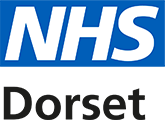People living with diabetes should have eye screening as part of their diabetes checks. As someone with diabetes, your eyes are at risk of damage from diabetic retinopathy. Screening can detect the condition early before you notice any changes to your vision.
Frequently asked questions
- Drops are put in your eyes to temporarily make your pupils larger. You may find the drops sting
- Photographs are taken of the back of your eyes. The camera does not come into contact with your eyes. Photographs are sent to an expert to review
- The appointment will last approximately 30 minutes
- A letter is sent to you and your GP within 6 weeks letting you know your screening results
- Eye drops may affect your vision for a few hours, so you should not drive after your appointment
- You may want to bring someone with you to the appointment
- Bring sunglasses as your eyes can feel sensitive after the eye drops
- There will be a quick visual assessment before they give you eye drops so please bring any glasses (not contact lenses) with you
Diabetic eye screening is important as it helps to prevent sight loss. As someone with diabetes, your eyes are at risk of damage from diabetic retinopathy. Screening can detect the condition early before you notice any changes to your vision.
Screening is offered every year to anyone with diabetes aged over 12 and over.
Retinal screening is an important part of diabetes care. Diabetes can affect the small blood vessels at the back of your eye, the retina. The effects of diabetic retinopathy can lead to damage to your eyesight if left untreated. Regular eye screening will check your retina for any signs of diabetic retinopathy and help manage any follow requirements that may be needed. It is important to keep your eye screening appointments when invited.
At your eye screening appointment, one of our highly trained retinal screeners will take photographs of the back of your eyes and check for any signs of diabetic retinopathy.
When you arrive at your screening appointment, please make yourself known to the screener or follow instructions at the location to find the screening room.
The screener will call you into the screening room when ready for your appointment, introduce themselves and check consent for the screening process.
The screener will then ask some questions regarding any relevant medical history that will help understand individual needs for ongoing care.
You will be asked to undertake a quick visual check by reading letters off a chart.
At this point of the appointment, the screener will place some drops into your eyes. This will dilate your pupils to allow for the photographs to be taken.
Once you are comfortable, the screener will ask you to take a seat outside for around 20 minutes while the drops take effect.
The screener will invite you back into the room, after the 20 minutes and will ask you to sit in front of the retinal camera.
A minimum of 2 photographs of each eye will be taken by the screener. The photographs do not hurt; however there will be a bright flash from the camera.
When all the images have been captured that are required, the screener will explain what will happen next and when to expect your results.
This condition occurs when diabetes affects small blood vessels, damaging the part of the eye called the retina. It can cause the blood vessels in the retina to leak or become blocked. This can affect your sight.
Eye screening is a key part of your diabetes care. Untreated diabetic retinopathy is one of the most common causes of sight loss. When the condition is caught early, treatment is effective at reducing or preventing damage to your sight. Remember, diabetic eye screening is not covered as part of your normal eye examination with an optician. Screening does not look for other eye conditions and you should continue to visit your optician regularly for an eye examination as well.
Eye drops may affect your vision for a few hours, so you should not drive after your appointment.
- Control your blood glucose as effectively as possible
- See your doctor regularly to check your blood pressure is not raised
- Attend your diabetic eye screening appointments
- Get advice if you have a problem with your sight
- Take your medication as prescribed

